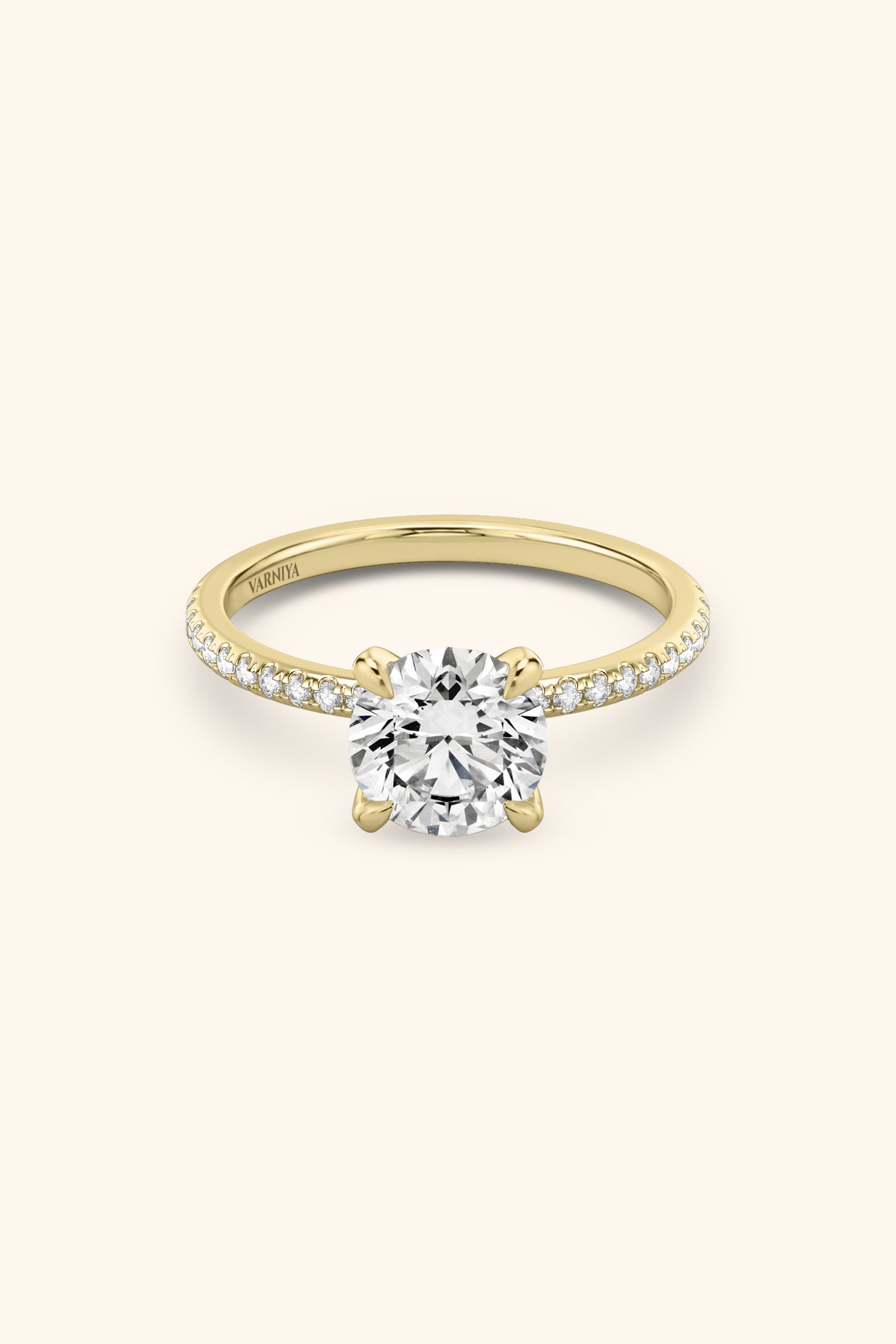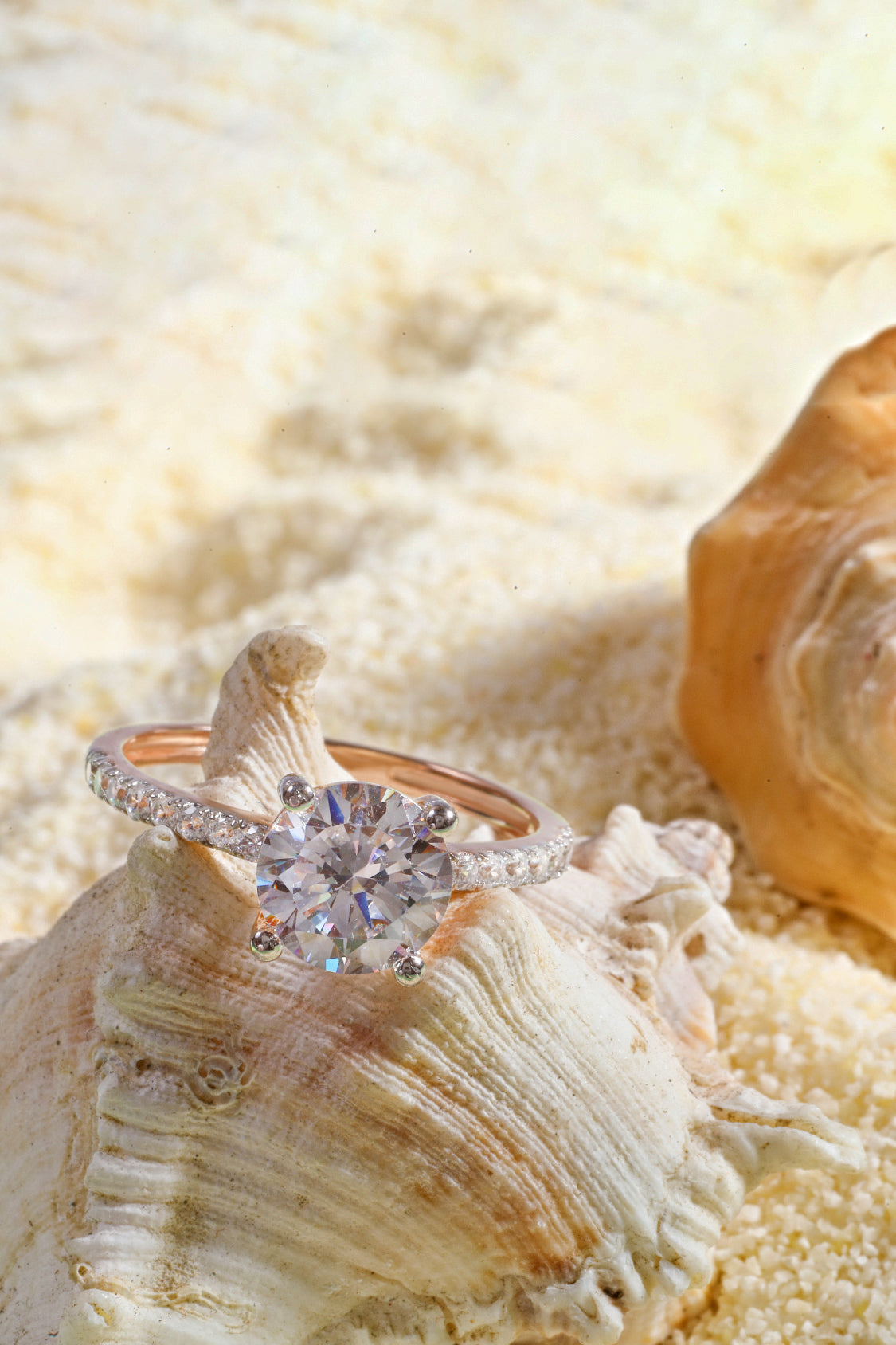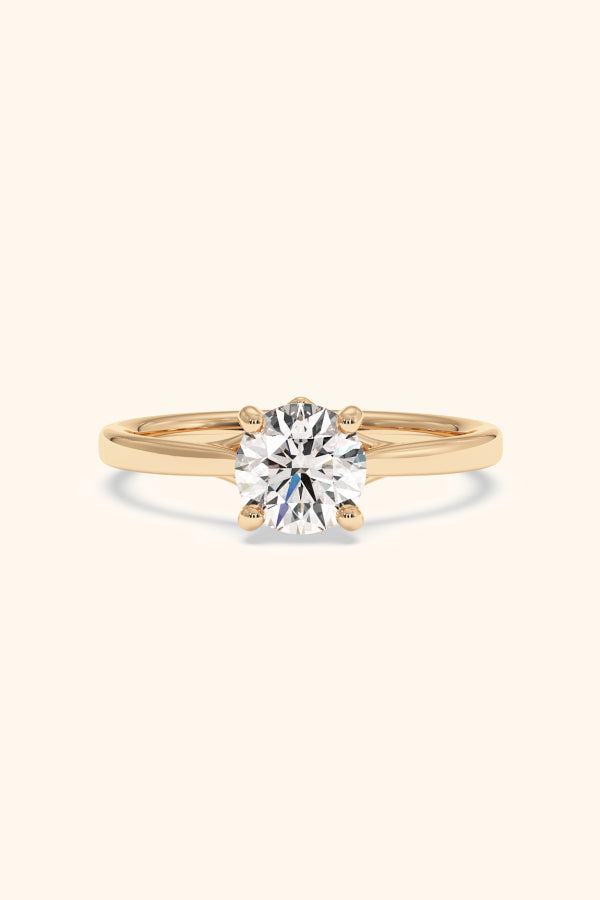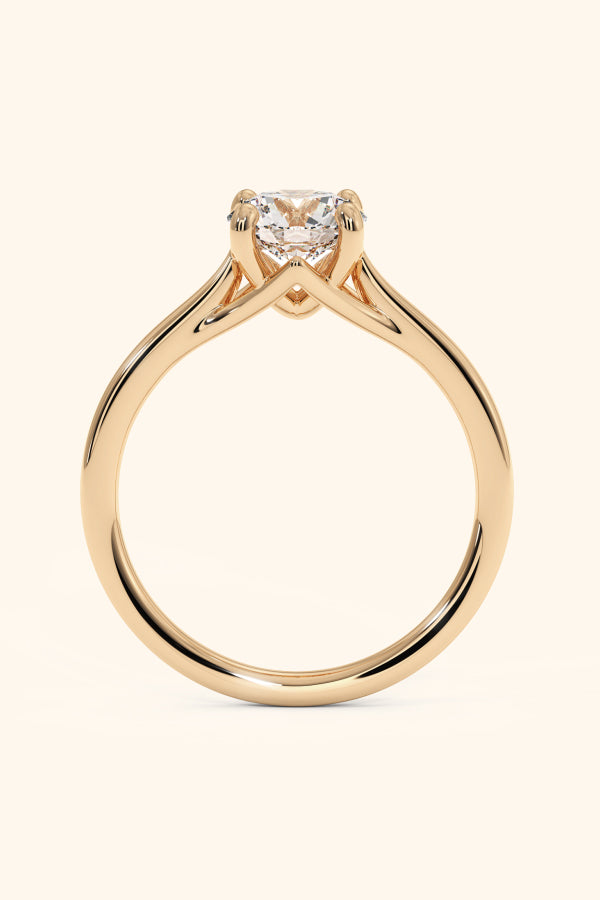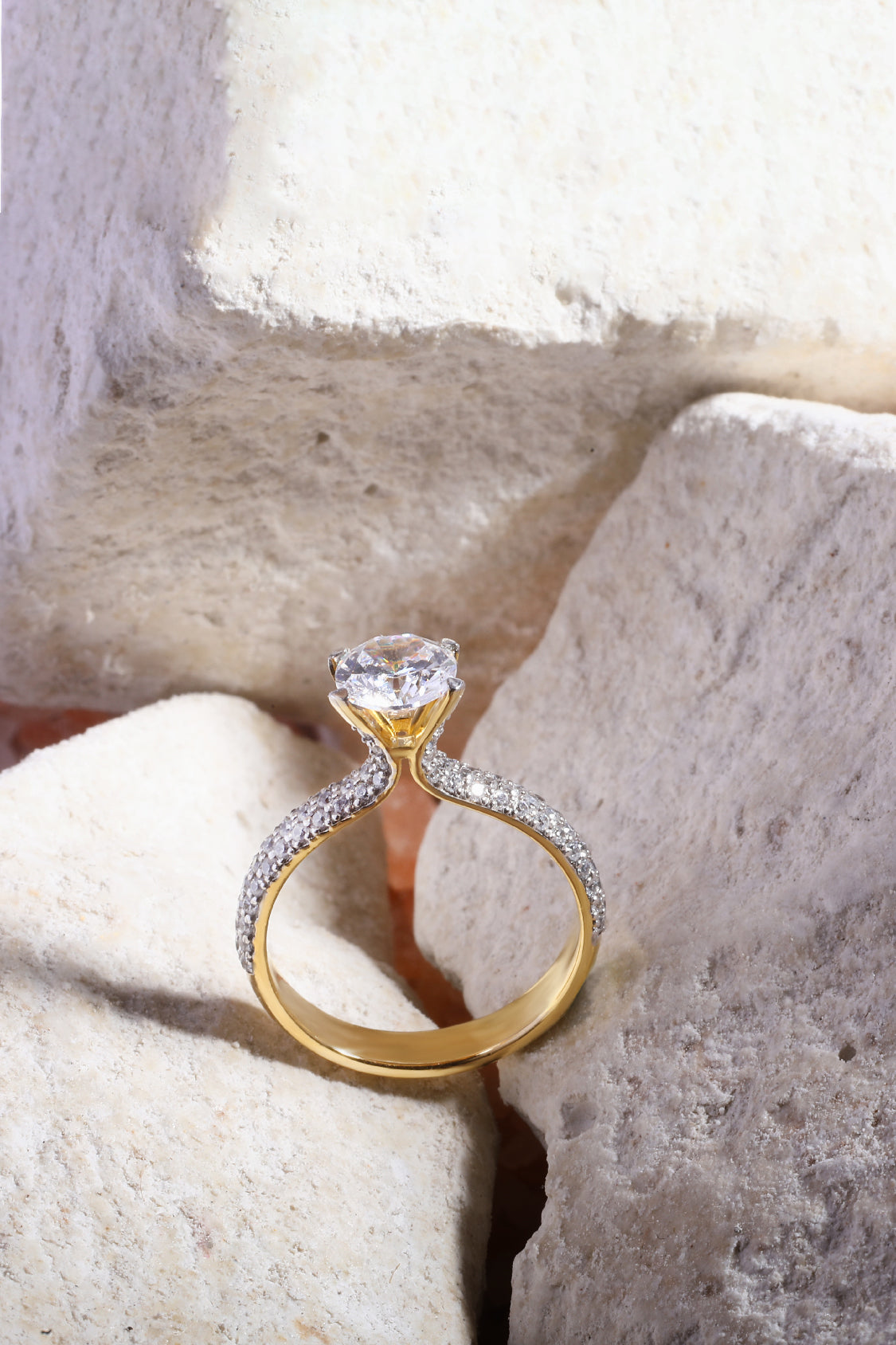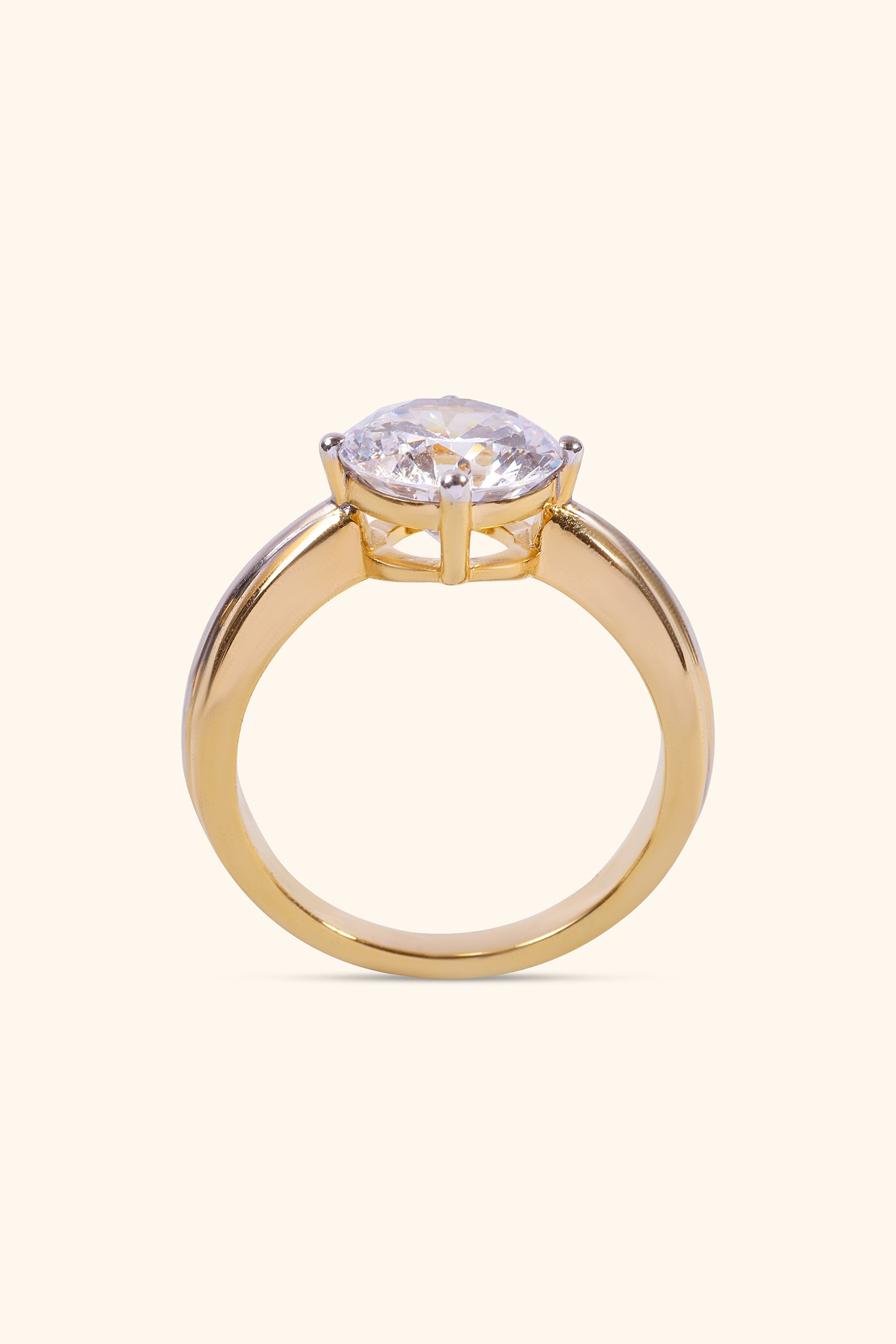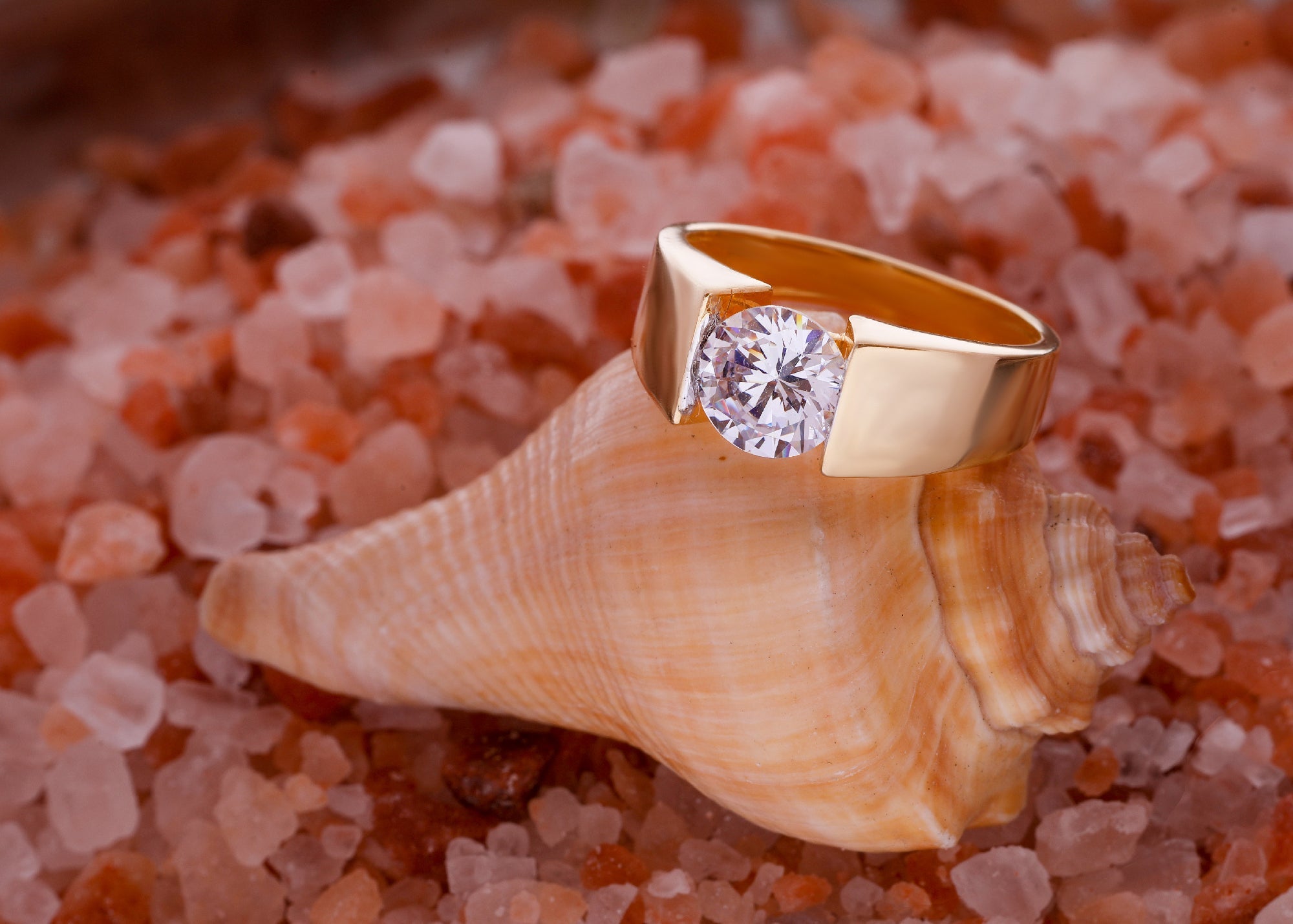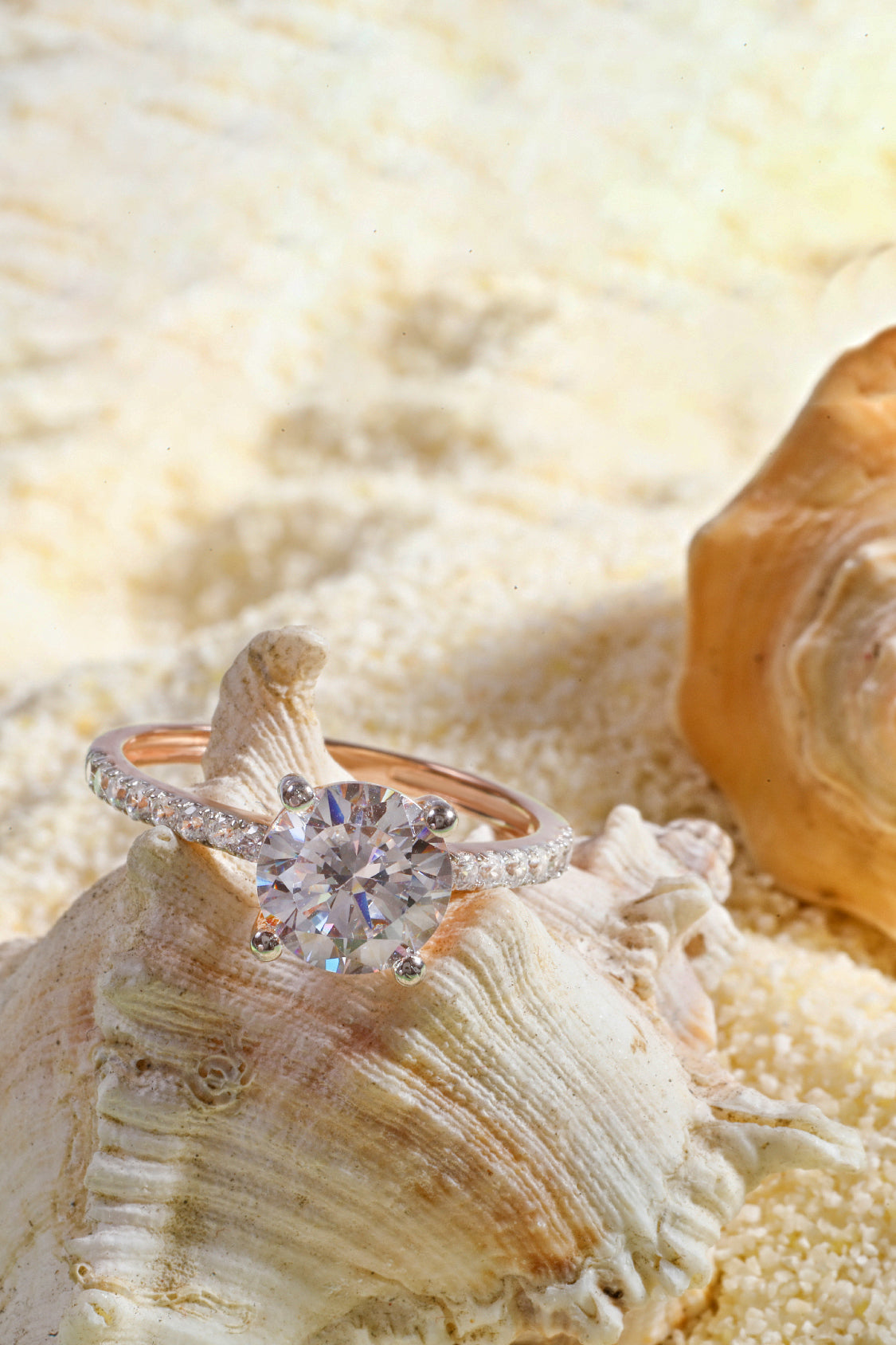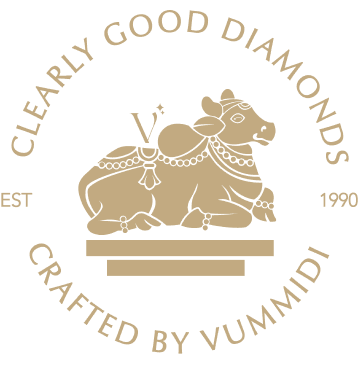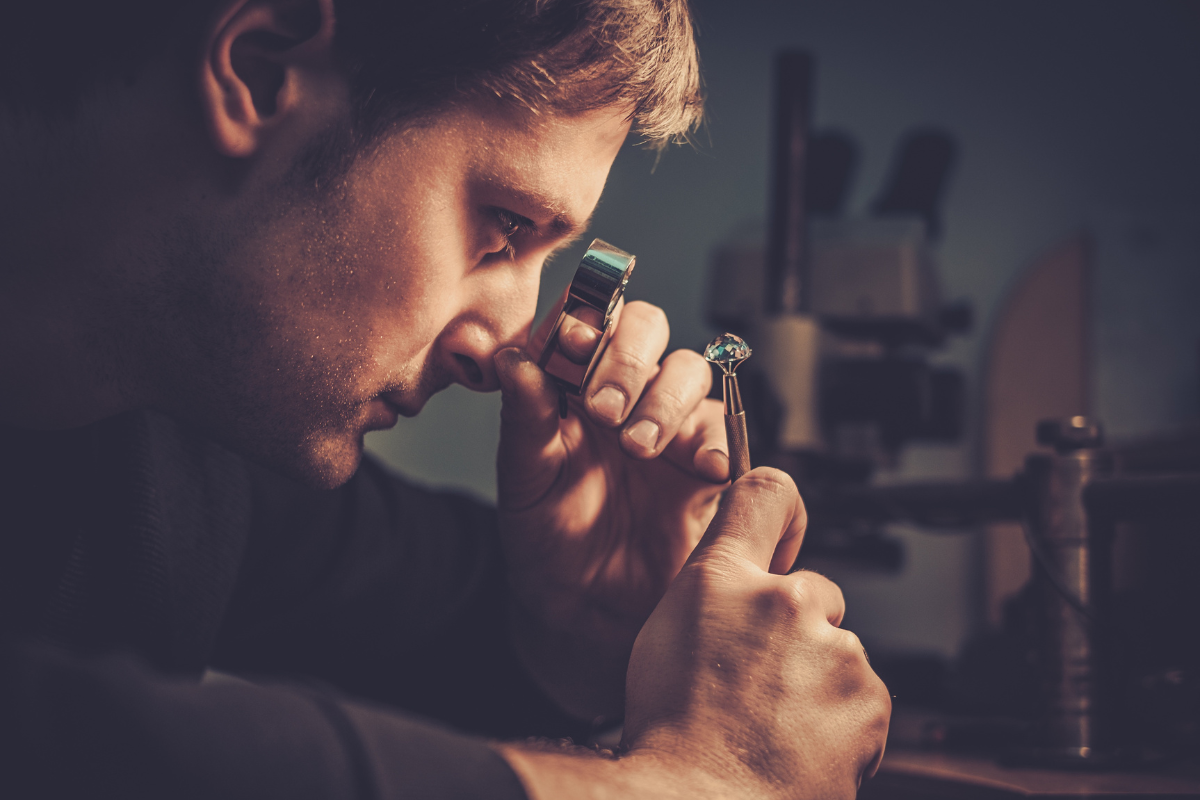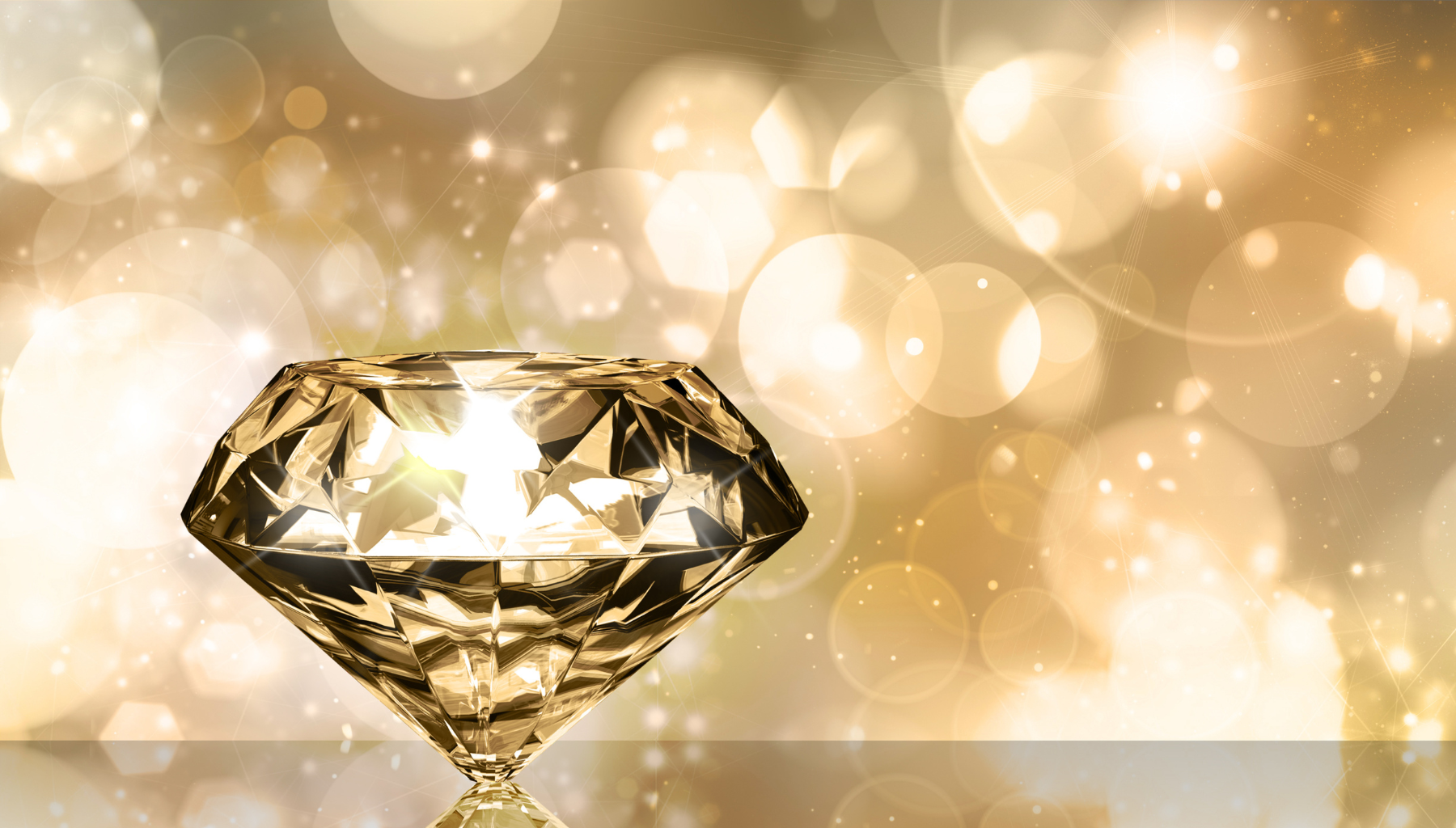
Are Lab-Grown Diamonds Real? The Truth Behind their Sparkle
When you first hear about lab grown diamonds, it’s normal to wonder, are lab grown diamonds real or just lookalikes? These diamonds are made in a controlled laboratory environment but have the same chemical structure as natural diamonds, meaning they’re not just similar, they're physically identical.
According to the Gemological Institute of America (GIA), lab diamonds rank 10 on the Mohs scale, just like real diamonds. You’ll also find that lab created diamonds are graded using the same 4Cs, carat, color, clarity, and cut, as mined diamonds. So, if you’re curious about the sparkle and value of grown diamonds, let’s break it down clearly.
What Are Lab Grown Diamonds?
Lab grown diamonds are created in a controlled lab setting using methods like HPHT diamonds and chemical vapor deposition. These laboratory grown diamonds are not artificial diamonds or diamond simulantsthey're made of pure carbon atoms, just like natural diamonds.
According to the Gemological Institute of America, they’re optically identical, chemically identical, and physically identical to mined ones. While often called synthetic diamonds or cultured diamonds, they form in a laboratory setting under the same manner as Earth’s conditions.
“A diamond is a diamond,” says GIA, regardless of whether it comes from the ground or a lab grown stone.
Are Lab Grown Diamonds Real?
1. Made from Pure Carbon Like Natural Diamonds
-
Lab grown diamonds are formed from pure carbon, just like earth created diamonds. They are not artificial diamonds or diamond simulants, they share the same atomic structure as natural stones.
2. Formed Under Controlled High-Pressure Conditions
-
These diamonds are grown in a controlled laboratory environment using techniques like HPHT, simulating how diamonds mined from the earth are formed. It’s only a matter of process, not quality.
3. Share the Same Hardness and Durability
-
Both natural and lab made diamonds rank 10 on the Mohs scale, proving equal durability. Their optical properties and strength make them ideal for daily wear.
4. Recognized by Major Gemological Institutions
-
The Gemological Institute of America has been grading laboratory diamonds since 2007. “They’re real diamonds,” GIA confirms — no disclaimers needed.
5. Graded Using the Same 4Cs Standards
-
Like all diamonds, lab grown diamond rings are graded on carat weight, color, clarity, and cut. These grading reports apply equally to lab grown diamond engagement pieces too.
6. Display Genuine Diamond Brilliance and Fire
-
Their optically identical makeup means they shine just like natural diamonds. The sparkle is real — no imitations here.
7. Accepted in the Fine Jewelry Market Worldwide
-
The jewelry industry now widely embraces lab grown stones for diamond engagement rings and fine collections. You can confidently buy lab grown diamonds for both style and value.
8. Legally Classified as Real Diamonds, Not Simulants
-
Legally and commercially, lab diamonds are real. They’re not synthetic diamonds in the misleading sense, they meet all standards for same quality as natural diamonds.
How do Lab Grown Diamonds Achieve their Sparkle?
Lab grown diamonds sparkle because they’re formed with the same crystal structure and carbon makeup as mined stones. When cut properly, they reflect and refract light in a way that gives off fire, brilliance, and scintillation. This sparkle isn’t artificial, it’s the result of controlled lab environments that replicate Earth's diamond-forming process.
According to the Gemological Institute of America (GIA), lab grown diamonds share a refractive index of 2.42, identical to that of mined diamonds.
That’s what gives them their shine, not surface coatings or imitations. In fact, lab grown diamonds are cheaper, but their sparkle stays true, making them a smart and cost effective choice.
Why Lab Diamonds Shine Just Like Real Diamonds?
Lab diamonds are made from pure carbon, arranged in the same atomic structure as natural diamonds. This gives them the optical properties needed to sparkle just as brightly. The light performance — how a diamond returns light to your eyes — is based on cut quality and symmetry, not origin.
“Whether grown or mined, it’s the craftsmanship in cutting that unlocks a diamond’s sparkle,” says Dr. James Shigley, a GIA research fellow.
And while cubic zirconia may look shiny at first glance, it lacks the fire and depth seen in real diamonds — including lab created ones.
Can You Tell the Difference by Sparkle Alone?
Not really. The sparkle of lab diamonds and natural ones is nearly identical. Visual separation isn’t possible without high-tech tools. Even experts rely on a lab created diamonds test to determine origin. Unless you're in a gem lab, you won't be able to tell. That’s why natural and lab diamonds are equally chosen for fine jewelry, you can’t tell the difference by sparkle alone.
Do Lab Grown Diamonds Have Any Real Value?
Lab grown diamonds do hold real value — not just in appearance but in composition and certification too. These diamonds are created using pure carbon, and their structure is identical to natural diamonds, both chemically and physically. According to the Gemological Institute of America (GIA), they are graded on the same 4Cs (carat, cut, clarity, color), just like mined diamonds. Their value lies in their visual appeal, durability, and ability to be certified by leading gem labs.Another layer of value is ethical. When you choose lab grown diamonds, you’re also avoiding the risk of buying conflict diamonds, which have been linked to human rights abuses in certain mining regions. That alone makes lab diamonds a conscious and responsible choice for many.
Is a Lab Grown Diamond Worth Buying?
Yes — for many people, a lab grown diamond is absolutely worth buying. On average, lab grown diamonds are cheaper by 30–50% compared to natural diamonds of similar quality, making them a cost effective option. This price difference allows buyers to get a larger or higher-grade diamond within the same budget.
They’re also becoming increasingly accepted in the market. For instance, a grown diamond engagement ring offers the same sparkle, hardness, and elegance as a mined diamond ring — but at a lower cost. While they may not appreciate in value over time, most buyers aren’t purchasing diamonds as investments.
As Dr. James Shigley of GIA puts it, “If beauty, quality, and transparency are what you care about, lab grown diamonds meet all those expectations.”
Are Lab Created Diamonds Better Quality Than Natural Ones?
The quality of lab created diamonds is comparable to natural diamonds, as both are graded using the same 4Cs: cut, color, clarity, and carat. The difference isn’t in how they look or perform, but in how they’re made. Lab grown diamonds cheaper reflects the efficient production process, not a drop in quality. According to the Gemological Institute of America, lab diamonds have the same physical and chemical structure as mined ones. As GIA gemologist Dr. James Shigley notes, “They’re optically and structurally the same.” Ultimately, it’s the grading, not the origin, that determines diamond quality.
Lab Diamonds vs Natural Diamonds: What’s the Difference?
Lab diamonds and natural diamonds may look identical, but their origin, pricing, and availability differ. Both are made of pure carbon and graded by the same standards, yet how they're formed and valued varies. Here's a clear side-by-side comparison to help you understand the key differences:
|
Aspect |
Lab Diamonds |
Natural Diamonds |
|
Origin |
Created in a lab using HPHT or CVD methods |
Formed naturally over billions of years |
|
Composition |
Pure carbon, same as mined diamonds |
Pure carbon |
|
Physical Properties |
Identical to natural diamonds |
Identical to lab diamonds |
|
Certification |
Certified by GIA, IGI, etc. |
Certified by GIA, IGI, etc. |
|
Environmental Impact |
Lower (but varies by producer) |
Higher due to mining |
|
Cost |
Generally 30–50% less |
Higher due to rarity and mining costs |
|
Availability |
Can be produced on demand |
Limited, based on geological conditions |
|
Resale Value |
Typically lower |
Traditionally holds more resale value |
|
Ethical Considerations |
Free from conflict concerns |
May involve conflict diamonds |
|
Visual Difference |
None visible to the naked eye |
None visible to the naked eye |
Can a Lab Grown Diamonds Test Really Spot the Difference?
While lab grown and natural diamonds may look the same, experts use specific tests and tools to tell them apart. Here's how:
1. Difference Can’t Be Seen Visually
-
To the naked eye, there’s no visible difference between the two.
-
Both lab grown and mined diamonds have the same brilliance, fire, and clarity when viewed casually.
-
According to the International Gemological Institute (IGI), “Visual appearance is not a reliable method for identifying diamond origin.”
2. Test Detects Growth Inclusions
-
Lab diamonds may contain growth lines or metallic inclusions not found in natural ones.
-
These internal features are visible under a microscope or advanced imaging tools.
-
A study by HRD Antwerp noted that some HPHT diamonds show “metallic flux inclusions,” which can be a giveaway.
3. UV Reactions Help Identify
-
Under UV light, lab diamonds, especially those grown with CVD, may fluoresce differently.
-
The fluorescence pattern helps labs determine the diamond's growth method.
-
About 30% of lab diamonds show different phosphorescence reactions, according to De Beers Group Institute of Diamonds.
4. Lab Reports Confirm Origin
-
Reliable labs like IGI, GIA, and GCAL provide origin reports with advanced testing.
-
These certifications are the only sure way to know if a diamond is lab grown or mined.
-
As IGI states, “Diamond origin cannot be assumed; it must be verified through gemological analysis.”
What Are the Disadvantages of Lab Grown Diamonds?
1. Lower Resale Value
-
Lab grown diamonds typically lose more value over time than mined diamonds.
-
According to Rapaport Group, most lab diamonds resell for less than 20% of their original price.
-
This is mainly due to their reproducibility and market saturation.
2. Perception of Being Less "Special"
-
Some buyers feel lab diamonds lack the emotional or historical value of a natural stone.
-
JCK Magazine noted that many shoppers still associate rarity with sentimentality when it comes to diamond gifts.
3. Still Relatively New in the Market
-
Though demand is growing, lab diamonds are still less familiar to older generations.
-
A 2022 survey by MVI Marketing found that 60% of consumers over 50 were unsure if lab diamonds are real.
-
This affects both buyer confidence and resale market potential.
4. Not Considered Rare or Unique
-
Lab diamonds can be mass-produced, so they’re not seen as one-of-a-kind.
-
This impacts their long-term value and desirability for some collectors.
5. Environmental Impact Isn’t Always Clear
-
Not all lab diamonds are eco-friendly.
-
Trucost ESG Analysis found that HPHT methods can use as much energy as powering a home for a month.
-
Only a few certified producers use renewable energy sources.
Should You Choose a Lab Diamond for Your Diamond Ring?
Choosing a diamond ring is a significant decision, and lab-grown diamonds offer a compelling alternative to mined diamonds. Here are some considerations:
-
Ethical and Sustainable Choice: Lab-grown diamonds are created in controlled environments, ensuring they are conflict-free and have a reduced environmental footprint compared to traditional mining.
-
Cost-Effective: Lab-grown diamonds typically cost 30-40% less than mined diamonds of similar quality, allowing you to select a larger or higher-quality stone within your budget.
-
Quality and Beauty: These diamonds possess the same physical, chemical, and optical properties as natural diamonds, offering identical brilliance and durability.
Why Choose Your Diamond Ring from Varniya -
Varniya stands out as a premier choice for lab-grown diamond jewelry. Here's why:
-
Heritage and Expertise: Rooted in the legacy of Vummidi Jewellers since 1900, Varniya combines over a century of craftsmanship with modern innovation.
-
Certified Quality: Varniya offers 100% certified lab-grown diamonds, ensuring authenticity and quality in every piece.
-
Diverse Designs: Their collection features a wide range of designs, from classic solitaires to contemporary styles, catering to various preferences.
-
Customization: Varniya provides bespoke services, allowing you to create a unique piece that reflects your personal style.
-
Sustainability Commitment: By choosing Varniya, you support sustainable practices without compromising on luxury and elegance.
In summary, opting for a lab-grown diamond ring from Varniya offers ethical sourcing, exceptional quality, and timeless beauty, making it a choice worth considering.
Conclusion
So, are lab-grown diamonds real? Absolutely, they have the same structure, shine, and strength as natural diamonds. The real difference lies in how they’re made and the values behind them. If ethical sourcing and mindful choices matter to you, you'll likely find lab grown diamonds sustainable and meaningful. They offer beauty without the baggage of mining.
Whether it’s for a proposal or a personal gift, it’s not just about the sparkle — it’s about what feels right to you. In the end, your diamond should reflect your story, your values, and what you truly care about.


